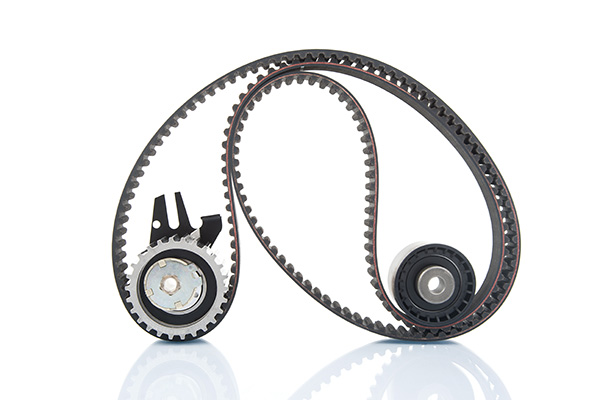
You may not think much about your car's serpentine belt, but it plays a vital role in keeping your vehicle running. Without it, many essential functions in your car would grind to a halt. So, what exactly is a serpentine belt, and when should you consider changing it? We'll explain its purpose and lifespan and give you some maintenance tips to ensure your car remains in top-notch condition.
What is a Serpentine Belt?
The serpentine belt is a long, continuous rubber belt used in modern vehicles to drive multiple peripheral devices in the engine. This belt winds its way through various components such as the alternator, power steering pump, water pump, air conditioning compressor, and sometimes the cooling fan.
Unlike the older V-belt system, which requires multiple belts to perform these functions, the serpentine belt simplifies the engine layout with a single, multi-ribbed belt. This design enhances efficiency and reduces the number of belts that need regular maintenance, making it a crucial component in today's automotive engineering.
How Does the Serpentine Belt Work?
At first glance, the serpentine belt may appear as just a long rubber loop. However, its function is far more complex. The belt is tensioned by a spring-loaded or hydraulic automatic tensioner that keeps it at the proper tension to prevent slipping. As the engine runs, the serpentine belt transfers rotational power from the crankshaft to the various peripheral devices, ensuring they operate seamlessly.
If the belt fails or malfunctions, it can lead to a domino effect of problems, as the systems it powers are critical for the vehicle's operation. Therefore, understanding how it works and recognizing when it needs attention is essential for every car owner.
Signs Your Serpentine Belt Needs Replacement
A well-functioning serpentine belt is important for the smooth operation of your vehicle, but like all parts, it will eventually wear out. Knowing the signs of a failing belt can save you from unexpected breakdowns. Here are some common indicators that your serpentine belt may need replacement:
- Squealing or Chirping Noises: Unusual noises, particularly when starting the car or during sharp turns, can signal that the belt is slipping or misaligned.
- Visible Wear and Tear: Cracks, fraying, or glazing (a shiny, slick appearance) on the belt surface are clear signs that it's time for a replacement.
- Power Steering and AC Failure: If the power steering or air conditioning stops working, it could be due to a malfunctioning serpentine belt.
- Engine Overheating: The serpentine belt powers the water pump, which helps cool the engine. A failing belt can lead to overheating.
When to Change Your Serpentine Belt
So, when should you replace your serpentine belt? The general rule of thumb is to replace it every 60,000 to 100,000 miles. However, this can vary depending on your vehicle's make and model, driving conditions, and maintenance habits. Always refer to your car's owner manual for specific recommendations.
Regular inspections are key to catching potential issues early. During routine maintenance, have your mechanic check the belt's condition and tension. If any signs of wear are detected, it's best to replace the belt promptly to avoid more serious issues down the road.
The Replacement Process
Replacing a serpentine belt is a straightforward process for a trained technician, but it can be challenging for those unfamiliar with car repairs. Here's a brief overview of what the replacement process involves:
- Inspection: The technician will inspect the belt for wear and check the tensioner and pulleys for any signs of damage or misalignment.
- Removal: The old belt is removed, and the tensioner is released.
- Installation: The new belt is installed, following the correct routing diagram, and the tensioner is re-engaged to ensure proper tension.
- Testing: The technician will start the engine and check that the belt operates smoothly and that all systems function correctly.
Is it time to replace your serpentine belt? Schedule a maintenance appointment at Marc Yount’s Tire Pros and keep your car running and avoid serious issues!